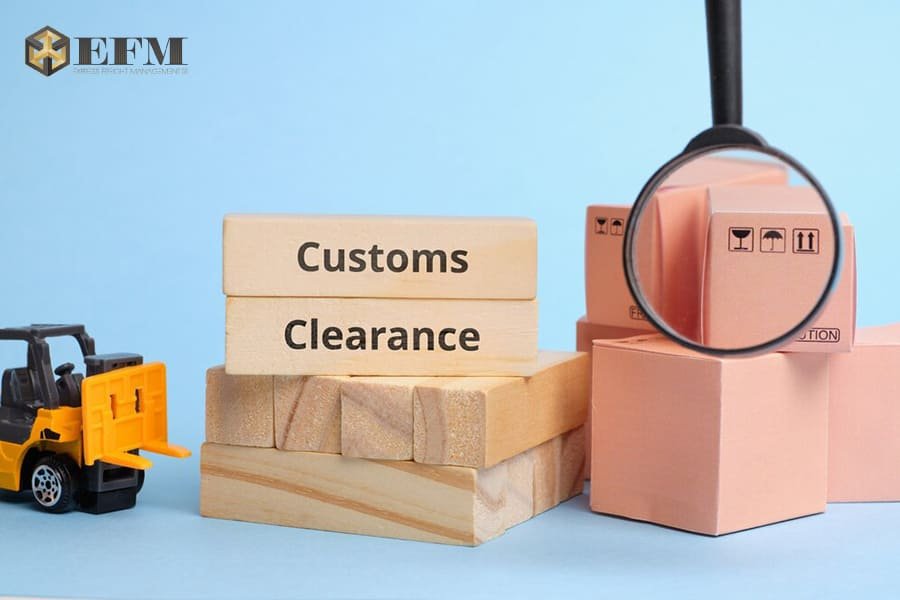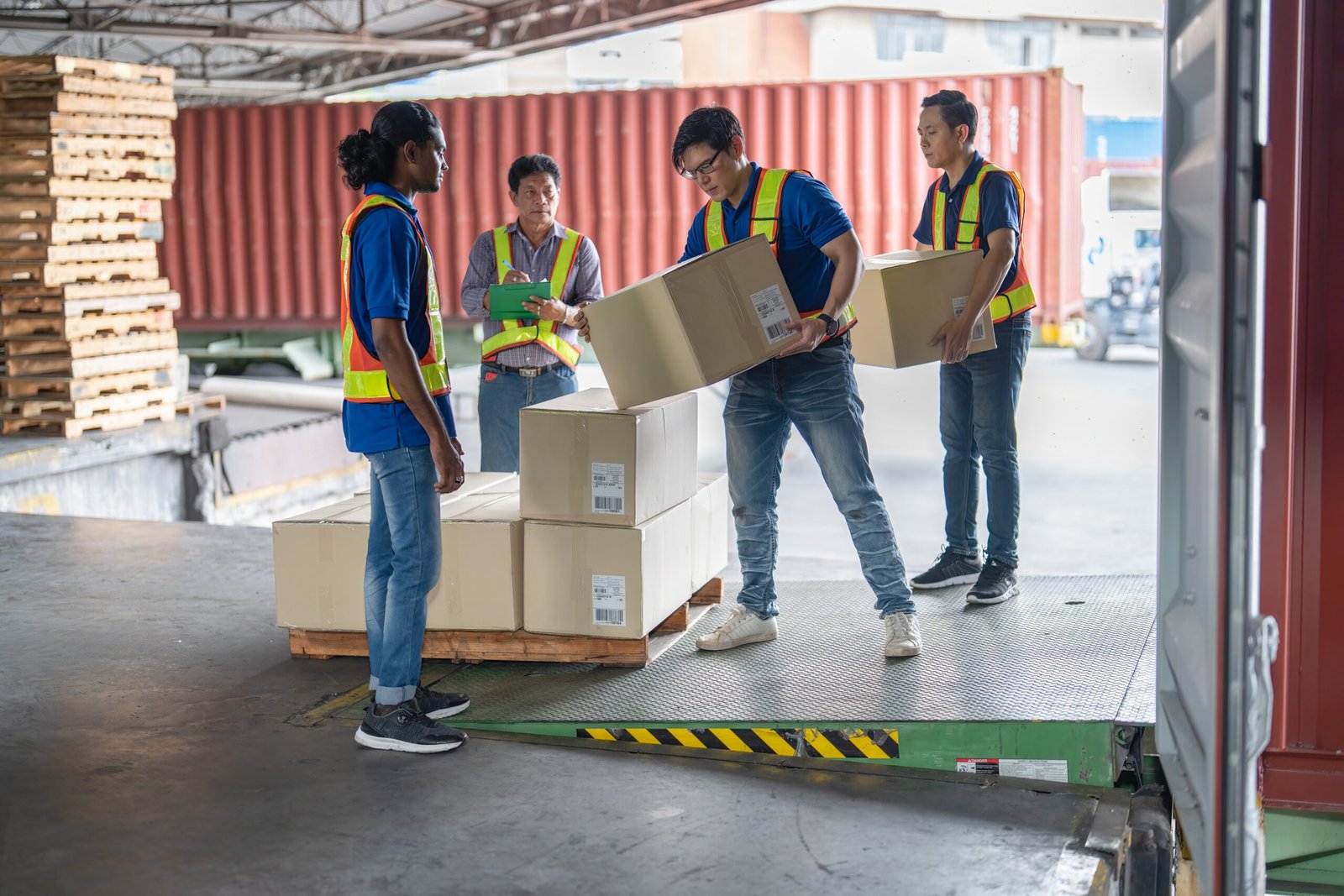How to Navigate Customs When Shipping from Korea to the U S

Shipping goods from Korea to the United States can be a smooth process if you understand the customs requirements and procedures. Whether you’re a small business owner or an individual looking to send packages, navigating customs is crucial to ensure your shipments arrive on time and without unexpected fees. By acquainting yourself with the necessary steps, you can avoid potential pitfalls and make the most of international shipping opportunities. In this guide, we’ll break down the steps to help you successfully ship goods internationally, ensuring both compliance and efficiency.
Understanding Customs Basics
Before you begin shipping, it’s important to understand the customs process. Customs is a government agency responsible for regulating goods entering a country. They ensure that imports comply with laws and regulations, collect duties, and prevent illegal items from entering. Familiarizing yourself with customs operations will not only facilitate smoother transactions but also help you anticipate and resolve any issues that may arise during the shipping process.
Key Terms
Understanding key customs terminology is essential for navigating the shipping landscape effectively.
- Tariffs: These are taxes imposed on imported goods, often varying based on the type of product and the country of origin. Tariffs can significantly affect the overall cost of your shipment, so it’s important to understand how they apply to your goods.
- Duties: Duties are fees payable on imported items based on their value, origin, and type. They represent a substantial part of the import cost and can influence pricing strategies for businesses.
- HS Code: The Harmonized System Code is used internationally to classify products. Accurately identifying the correct HS Code is crucial, as it determines the applicable tariffs and duties, ensuring compliance with international trade regulations.
Importance of Accurate Documentation
Accurate documentation is critical for customs clearance. Missing or incorrect information can lead to delays or fines. Essential documents include:
- Commercial Invoice: This document provides detailed information about the goods, including their value, and seller/buyer details. It serves as the primary document for determining duties and taxes.
- Packing List: This lists the contents, dimensions, and weight of each package, aiding in the verification process and ensuring that all items are accounted for.
- Bill of Lading: This is a contract between the shipper and the carrier detailing the shipment. It acts as a receipt for the goods and outlines the terms of transport, making it a crucial piece of documentation for both parties involved.
Maintaining comprehensive and accurate records not only expedites the customs process but also reduces the risk of disputes or misunderstandings.

Preparing Your Shipment
Preparing your shipment involves several critical steps that ensure your goods comply with both Korean and U.S. customs regulations. Proper preparation can help avoid delays, additional costs, and complications during transit.
Classifying Your Goods
The first step is to properly classify your goods using the HS Code. This international code system helps customs determine applicable duties and taxes. You can find the correct HS Code for your products on the World Customs Organization website or consult with a customs broker. Proper classification is not just a bureaucratic necessity; it ensures that your goods are processed efficiently and that you’re paying the correct amount in duties and taxes.
Additionally, improper classification can lead to legal issues or penalties, so it’s worth investing time to get it right. Many businesses choose to work with a customs broker to ensure accuracy and compliance, which can be particularly beneficial if you’re unfamiliar with the classification system.
Determining Duties and Taxes
Once your goods are classified, you’ll need to calculate any duties and taxes. These fees depend on the product type, value, and trade agreements between the U.S. and Korea. Use online calculators or consult a customs broker for accurate estimates. Understanding these costs upfront allows for better financial planning and pricing strategies.
Moreover, keeping abreast of any changes in trade agreements or tariffs between Korea and the U.S. is crucial, as these can affect the cost and process of shipping. Regular consultation with a customs expert can help you stay informed and adjust your shipping practices as necessary.
Choosing the Right Shipping Method
The shipping method you choose affects delivery time, cost, and customs procedures. Selecting the appropriate shipping method involves balancing speed and cost while considering the nature of the goods being shipped.
Air Freight
Air freight is the fastest shipping method but can be more expensive. It’s ideal for small, high-value items or time-sensitive deliveries. Customs clearance for air freight is usually quicker, but ensure all documents are prepared to avoid delays. The speed of air freight makes it a preferred choice for perishable goods, electronics, or urgent orders.
While air freight offers speed, it’s essential to account for the higher costs associated with this method. Businesses often use air freight for valuable or time-sensitive items where the premium cost is justified by the need for rapid delivery.
Sea Freight
Sea freight is cost-effective for large shipments but takes longer. It’s suitable for bulk goods or items with flexible delivery dates. Customs clearance for sea freight may involve more detailed inspections, so accurate documentation is crucial. This method is ideal for shipments where budget is a concern and delivery time is not critical.
In addition to being economical, sea freight allows for the shipment of oversized items that may not be feasible via air freight. However, the longer transit time requires careful planning to ensure timely arrival.
Courier Services
Courier services like DHL, FedEx, and UPS handle customs clearance on your behalf, simplifying the process. They offer door-to-door delivery and tracking, making them a convenient choice for smaller shipments. Courier services are excellent for small businesses or individuals who may not have extensive experience with international shipping.
By handling customs procedures, couriers reduce the burden on the shipper and provide peace of mind with real-time tracking and customer support. This convenience often offsets the higher costs associated with courier services for smaller packages.
Completing Customs Forms
Completing customs forms accurately is essential for smooth clearance. Properly filled forms ensure your shipment adheres to international shipping laws and regulations.
Customs Declaration Form
The customs declaration form provides details about your shipment, including the value, contents, and origin. Be honest and precise to avoid complications. This form is critical in determining the correct duties and taxes, so accuracy is paramount.
Completing the customs declaration form carefully can significantly reduce the likelihood of delays or additional inspections. Always double-check the information to ensure consistency across all documents.
Importer Security Filing (ISF)
For sea freight, an ISF must be filed 24 hours before the goods are loaded onto the vessel. This form includes information about the importer, consignee, and shipment details. Filing the ISF on time is crucial, as late submissions can result in fines and delays.
The ISF is a security measure designed to improve the safety of maritime transportation, so compliance is not only a legal requirement but also contributes to the overall security of international shipping operations.

Handling Customs Clearance
Working with a Customs Broker
A customs broker is a licensed professional who can handle customs clearance on your behalf. They ensure compliance with regulations, prepare documentation, and calculate duties and taxes. While hiring a broker incurs an additional cost, it can save time and prevent costly mistakes. Brokers offer expertise and insights that can streamline the shipping process, making them invaluable for complex shipments or high-volume traders.
Choosing a reliable broker involves evaluating their experience, reputation, and familiarity with the specific markets and goods you’re dealing with. A good broker can also provide updates on regulatory changes, helping you stay compliant and informed.
Monitoring Your Shipment
Track your shipment to stay informed about its status. Most carriers provide online tracking tools that update you on the location and estimated arrival time. If you encounter delays or issues, contact your carrier or customs broker for assistance. Regular monitoring can help you anticipate and mitigate potential problems before they escalate.
Proactive tracking not only ensures that you can address issues promptly but also provides valuable information for managing customer expectations and logistics planning.
Resolving Common Issues
Delays in Customs
Delays can occur due to missing documents, incorrect information, or random inspections. To minimize delays, double-check all paperwork and ensure it’s complete and accurate. If a delay occurs, work with your customs broker to resolve the issue promptly. Being prepared with a contingency plan can also help manage the impact of unexpected delays.
Understanding the common causes of delays and how to address them can improve your shipping efficiency and customer satisfaction. Regular communication with your broker and carrier is key to resolving issues quickly.
Unexpected Duties and Fees
Unexpected fees can arise if goods are misclassified or if additional inspections are required. To avoid surprises, research applicable duties and taxes beforehand and consult with a customs broker if needed. Accurate classification and documentation are your best defenses against unforeseen costs.
By staying informed and prepared, you can reduce the likelihood of encountering unexpected charges, ensuring that your shipping process remains cost-effective and predictable.
Final Tips for Successful Shipping
- Start Early: Allow plenty of time for customs clearance, especially during peak seasons or holidays. Early preparation can prevent last-minute complications and ensure timely delivery.
- Stay Informed: Keep up with changes in customs regulations and trade agreements that may affect your shipment. Regularly updating your knowledge can help you adapt to new requirements and maintain compliance.
- Communicate Clearly: Provide clear instructions and information to your carrier and customs broker to avoid misunderstandings. Effective communication can prevent errors and ensure a smooth shipping experience.
Shipping from Korea to the U.S. doesn’t have to be complicated. By understanding customs processes and preparing your shipment accurately, you can ensure a smooth and successful delivery. Whether you’re shipping for business or personal reasons, these steps will help you navigate customs with confidence. Proper planning and execution are key to mastering international shipping and taking advantage of global market opportunities.
Streamline Your Shipping Logistics with Express Freight Management
Are you ready to simplify your shipping process and ensure timely deliveries? Partner with Express Freight Management today! Our expert team is dedicated to providing tailored solutions that meet your unique shipping needs. From customs clearance to tracking your shipments, we handle it all, allowing you to focus on growing your business.
Contact us now to learn more about how we can help you navigate the complexities of international shipping and enhance your logistics efficiency!
